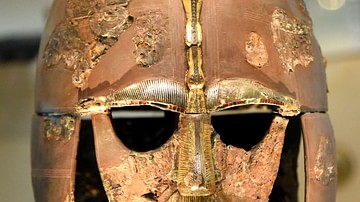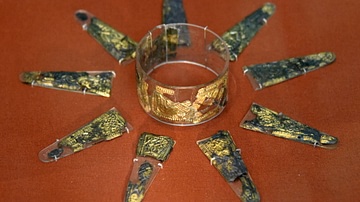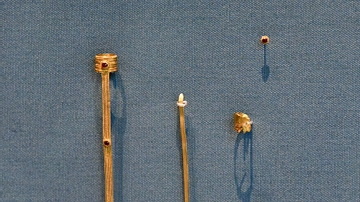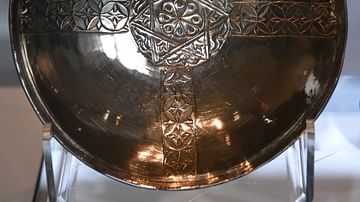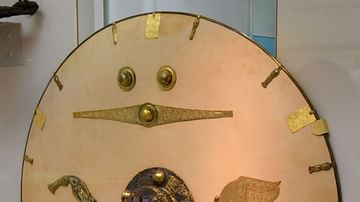Illustration
Gold shoulder-clasps from Sutton Hoo, Ship-burial Mound 1, England, UK. Late 500s to early 600s.
The British Museum, London.
The shoulder-clasps would have displayed the power and authority of their wearer. They are similar in style to those used in older Roman forms of military dress, and were attached to a thick or padded garment using loops at the back. Made in 2 halves, each clasp is decorated with cells inlaid with garnets and patterned millefiori glass. They are hinged around a central animal-headed pin and curved to fit the shoulder. Setting gems on a curved surface like this required extraordinary skill. Interlacing serpents with blue-glass eyes border the clasps' edges, while 2 interlocking boars (symbols of strength and courage) decorate the rounded ends.
About the Author
Cite This Work
APA Style
Amin, O. S. M. (2016, May 12). The Sutton Hoo Shoulder-clasps. World History Encyclopedia. Retrieved from https://www.worldhistory.org/image/5107/the-sutton-hoo-shoulder-clasps/
Chicago Style
Amin, Osama Shukir Muhammed. "The Sutton Hoo Shoulder-clasps." World History Encyclopedia. Last modified May 12, 2016. https://www.worldhistory.org/image/5107/the-sutton-hoo-shoulder-clasps/.
MLA Style
Amin, Osama Shukir Muhammed. "The Sutton Hoo Shoulder-clasps." World History Encyclopedia. World History Encyclopedia, 12 May 2016. Web. 02 Apr 2025.



